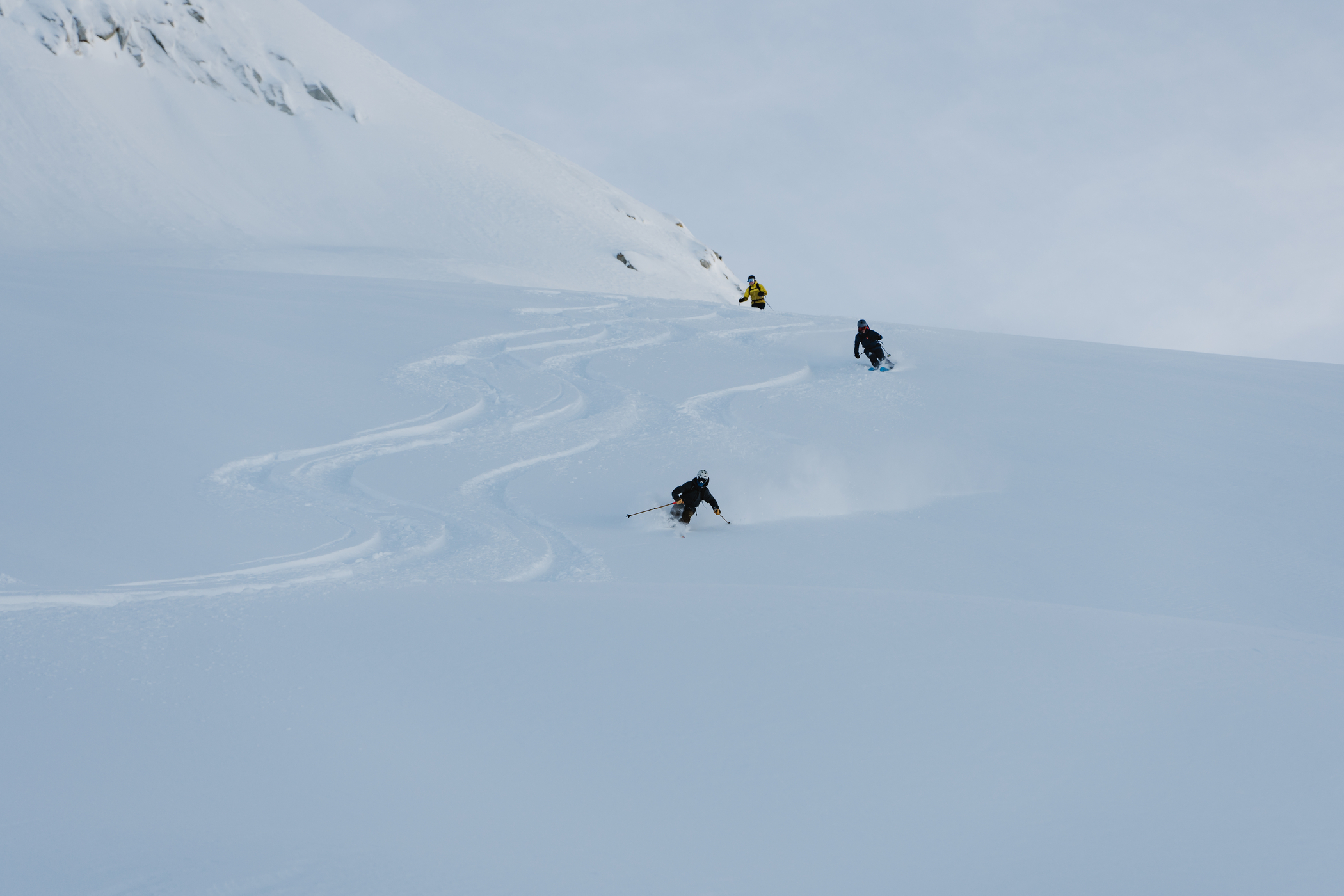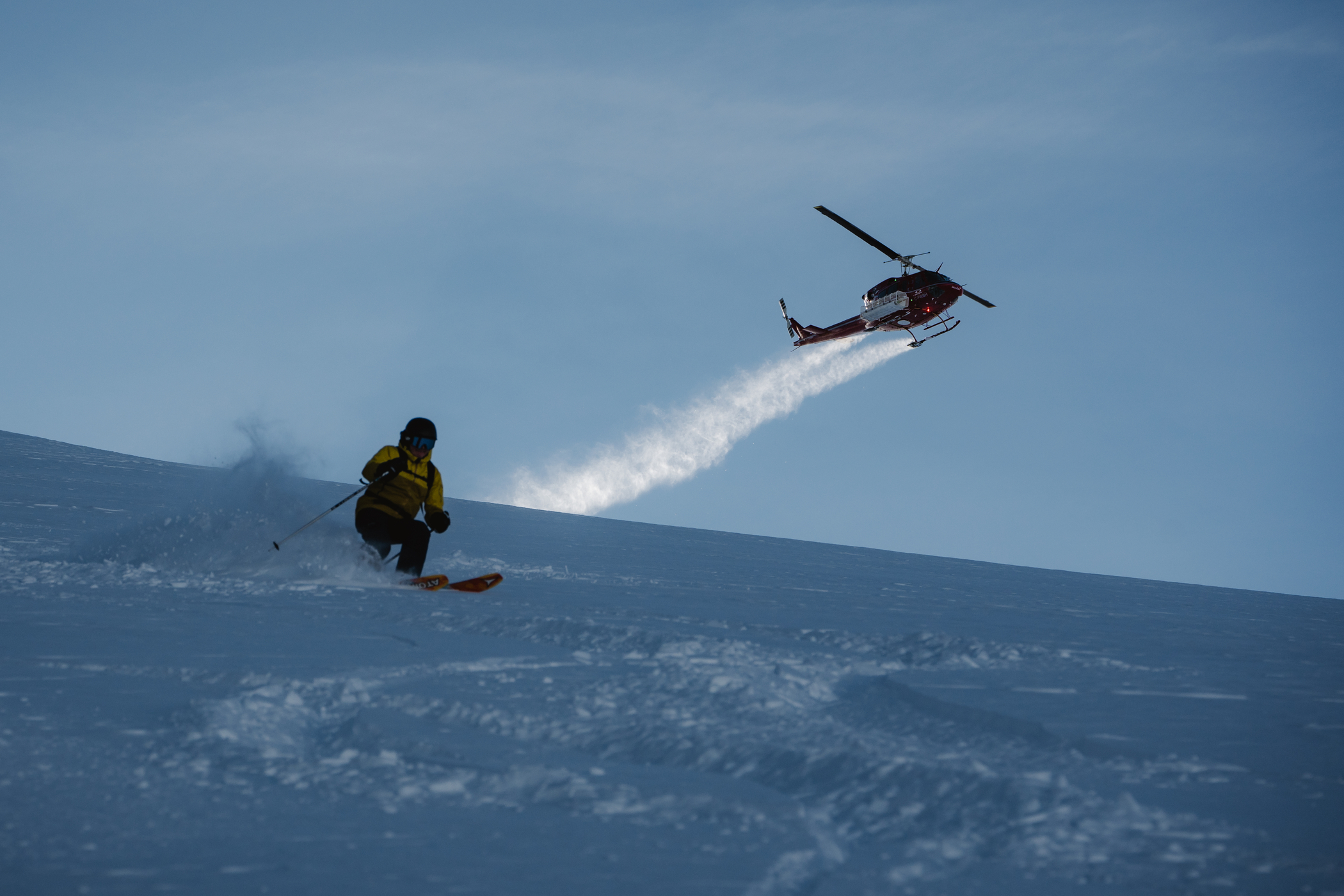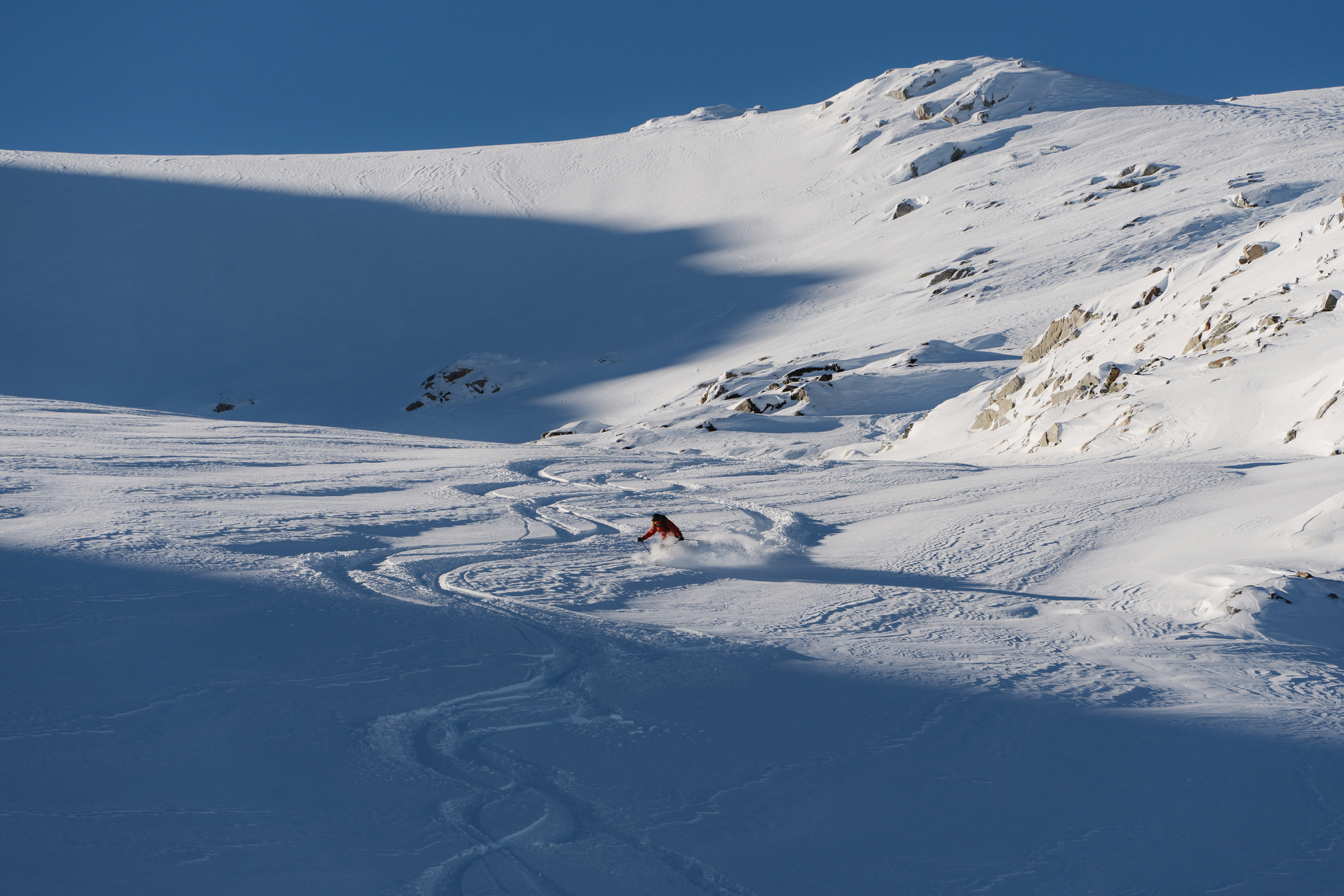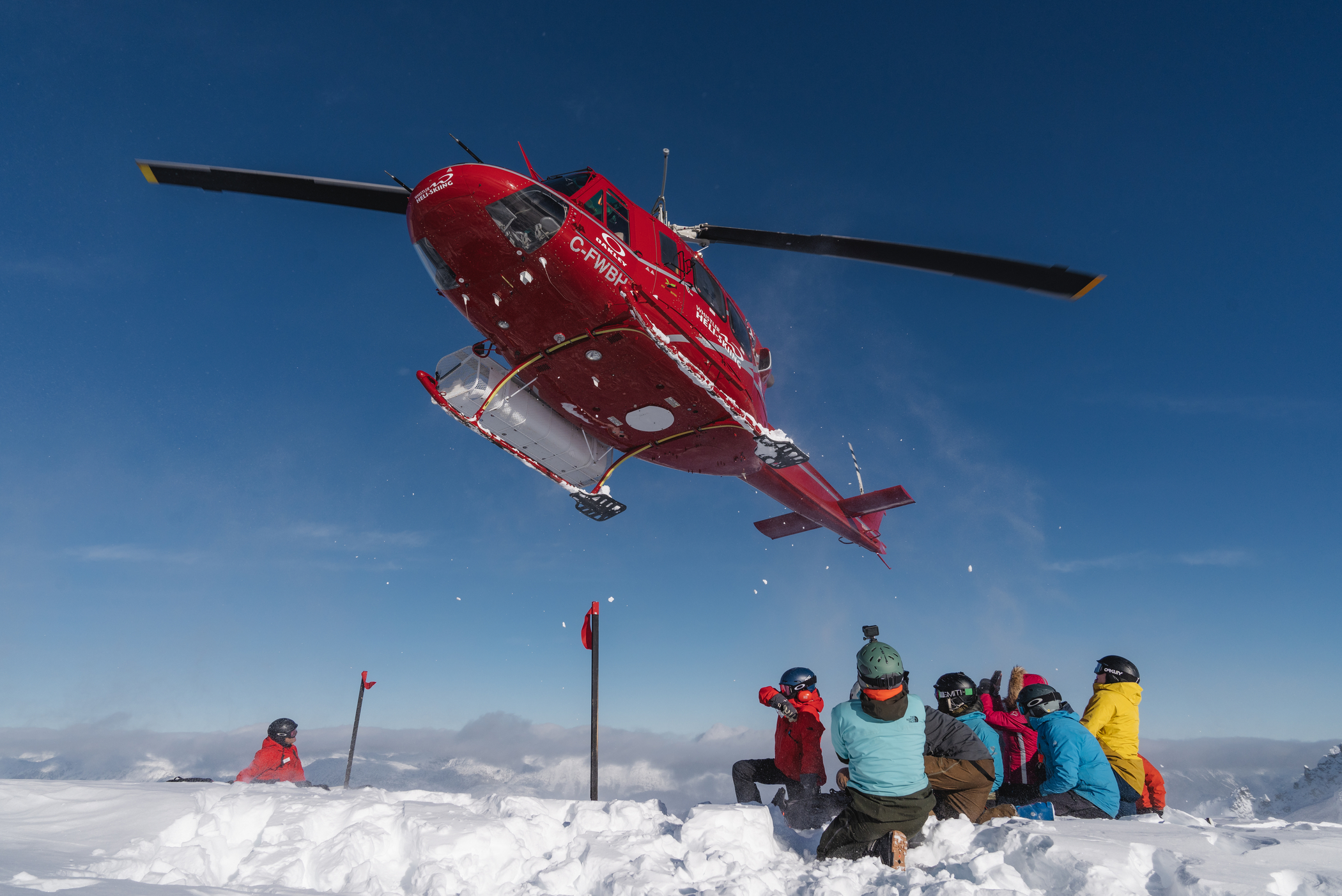My head flicks away reams of snow. My legs inelegantly twist the wrong way up the slope, my arms stretching out wide. Poles and skis? Haven’t a clue. I plummet metres past an unforgiving mound of snow, but I am soon vibrating with muffled laughter. No fall has ever felt so tender; I’m simply sinking through air.
Just like that, aged 55 and with three recent major abdominal operations in as many years, I’m tumbling downhill from my first vertical ski drop by helicopter. All my nerves—and acute awareness that I don’t bounce as I once did—vanish in one bruise-free swoop.
Sure, I’m the slowpoke among nine gung-ho Canadian, British, American, and Australian skiers and boarders (there’s only one other woman). But I soon recover without any embarrassment—the joy of midlife—to float down the rest of the limit-pushing terrain.

It’s a bluebird January day and we “stay low, move slow,” clambering into the helicopter that flies us 20 minutes away, to high above the El Niño-melted lower pistes of nearby Whistler Blackcomb. Slouching out of the cabin and huddling together on our knees a few meters away—forget any James Bond-style jump-out with skis ready for action—we shield our faces from the blasting snow as the red Bell 212 “workhorse” lifts off.
In the first moment of silence, looking over the pinnacle view of the Pemberton Glacier, it suddenly dawns on us that all this is ours alone for the day. Some 2,700 metres at its peak, it is one of five vast icefields in B.C. that make a top-of-the-world body double for the Arctic (and Antarctic) in films and TV shows such as The X-Files.
For the 43-year-old Whistler Heli-Skiing company, it’s a bucket-list playground of 432,000 acres (or, as they like to boast, 50 Whistler Blackcombs). Little wonder B.C. is at the vanguard of the extreme sport, with the largest number of heli-operators in the world, according to HeliCat Canada, which represents both heli- and cat-skiing operators. Some 44,000 heli-skiers are whisked away here each year, making it a $300-million-a-year industry in the province.
Shortly after landing on Ipsoot Mountain (meaning “hidden” in Chinook Jargon), our guide, Kirk, whips out a serrated knife and deftly slices the powder to check the layers of snow. “There’s an avalanche risk—but I don’t mean to scare you,” he says. We’re in the company of giant cornices, after all, and heavy snowfall often destabilizes the snowpack below. Before liftoff from basecamp, we ran through safety drills, just in case, and now we carry with us probes, shovels, and transmitters/receivers. Kirk’s reassurance that “you’ll always be sending your own personal radio waves into the universe” resonates with me for the rest of the day.

Instruction on the unblemished slopes—the aftermath of naturally occurring avalanches already evident—comes via radio feedback from the veteran guide. To steer clear of a crevasse or rocks, for instance, or avoid slipping down into a troubling tree well (a snowy hole at its base), we take off in turn every 15 seconds, zigzagging to the left or right of—or strictly sticking to—Kirk’s tracks. “Do what I tell you,” he stresses. “Don’t deviate.”
We obey, of course, over the 4,000 vertical metres (clocked via 3D map) before shredding with even greater brio and louder whoops when the white ocean descends less precipitously. The American snowboarder catches some air, and we all spray powder behind us like we’re waterskiing. At this elevation, though, our four-run heli-ski tour dips only briefly into the glades.
Of course I know I’m being ruined. No crowds, line-ups, or orange markers to spoil even an inch of the expanse—the acme of all the wilderness wonder that lured me over to Vancouver from my home in the U.K. Heck, unlike backcountry warriors who hike the peaks to earn their powder rewards, our sweat comes only from the long runs.

At the end of Ipsoot, the helicopter noses its way towards our tightly wrapped pack. Unnervingly, it descends straight at us—a necessary part of its precision landing—while the downdraft of its blades knocks over one of our team. I’ve never been happier to have my middle-age-spread ballast.
We’re soon buzzed to the next vista to tackle new adrenaline-rushing terrain called Raltney Mountain and its backside. Flowing onto the Picnic run, we shed our skis and tuck into, you guessed it, lunch: a rather elevated pumpkin soup, sandwich, and power cookie from Whistler’s Bearfoot Bistro. Sated, we greet a second Whistler Heli-Skiing group with a mix of Dutch, Danes, and Romanians as we leave.
None of us wants to call it a day. The powder is addictive; the solitude, too. But consolation comes the next morning, with the new dawn patrol ride to the top of Whistler. On days when the helicopter is unable to fly (because of wind, for example), Whistler Heli-Skiing brings you, priority-style, up to the peak at 7:30 a.m. for the freshest of first tracks.

Far more familiar with this terrain and its blue and black corduroy pistes, coated at last with an abundance of snow, I confidently carve sophisticated turns—a skill honed over the years with my Canadian Ski Instructors’ Alliance training. As an expat, I came late to the CSIA, only gaining the first level in my late 30s, and spent a few years as one of the oldest instructors teaching newbies at Grouse Mountain.
Still, I’d swap all that carving for just one more helicopter lift up to an unpolished tumble into intoxicating white powder. And I’d remember my snorkel next time.









